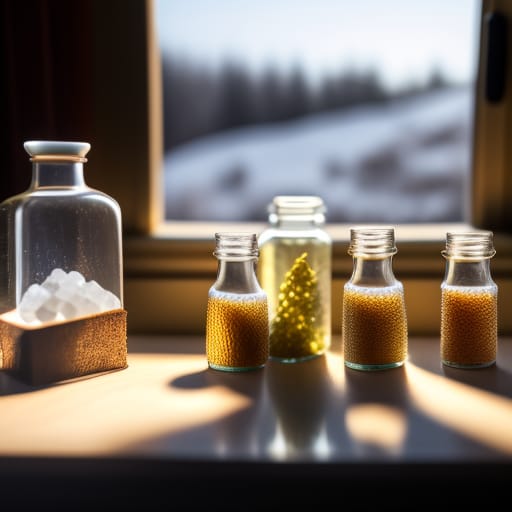Have you ever looked at a geode or crystal cluster and wondered how these beautiful formations are made in nature? With a crystal growing kit, you can simulate that natural process at home and grow your own stunning crystals in a matter of days or weeks. But exactly how long does it take for a crystal growing kit to yield results? This beginner’s guide will walk you through everything you need to know about crystal growing timelines and the factors that affect growth.

An Introduction to Crystal Growing Kits
A crystal growing kit contains all the materials and instructions you need to grow crystals at home as an educational science experiment. Kits typically include:
- Seed crystals
- Chemical solutions
- Containers
- Materials like string or clay to suspend the seed crystals
- Comprehensive instructions
Crystal growing kits are popular among:
- Science enthusiasts
- Geology hobbyists
- Kids and students interested in STEM
- Amateur chemists
Growing crystals is an exciting way to learn about chemistry, bonding, nature, and the beauty of crystallization. It also makes a fun hands-on science fair project.
The earliest crystal growing kits appeared in the 1950s, though people have been hand-growing crystals for centuries. Today there are many beginner-friendly kits available through science retailers and online marketplaces like Amazon. Popular entry-level kits include:
- Nat Geo Mega Crystal Growing Lab – Grow huge colored crystal clusters
- Caleb Crystal Growing Kit – Features a display case for crystals
- 4M Gemstone Crystal Growing Kit – Grow 7 colorful crystal varieties
How Do Crystal Growing Kits Work?
Crystal growing kits take advantage of a process called crystallization. This is how crystals form both in nature and through chemical techniques in a laboratory setting.
The basic process involves:
- Mixing chemical solutions in a container
- Adding seed crystals or crystal powder
- Allowing the solution to evaporate as the crystals grow
Most kits use common household chemicals like borax, salt, or alum powder mixed with water. Some also contain food coloring to grow colored crystals. The solutions are poured into jars, and a crystal seed is suspended in the liquid using clay, string, or another method.
As the solution evaporates over a period of days or weeks, the chemical compounds solidify and bond around the seed crystal in an ordered lattice pattern, slowly forming a complete crystal.
What Factors Determine Crystal Growth Time?
Growing crystals with a kit involves patience as it is not instantaneous. The total time depends on several environmental factors during the growth period:
- Water quality – Hard water can affect crystal formation
- Temperature – Warmer temperatures speed up evaporation
- Light exposure – Some crystals grow best in the dark
- Chemical concentration – More concentrated solutions grow crystals faster
- Agitation – Stirring or shaking can disrupt lattice formation
The timing will also depend on the type of seed crystals used and their molecular structure. But in general, you can expect to wait between 1-6 weeks for full crystal formation. Fast-growing seed varieties include alum, Epsom salt, and table salt, which may only take 1-2 weeks. Slower-growing crystals like borax and copper sulfate can take up to 6 weeks to fully form.
Displaying Your Crystal Creations
Once your crystals are fully grown, you’ll want to showcase their natural beauty. Most kits include display cases or plastic stands to safely handle your crystals without disruption.
For the best presentation:
- Carefully remove crystals from growth solution using tongs
- Allow crystals to fully dry on a paper towel
- Mount each crystal in its display case
- Position near a light source to illuminate colors
Your crystals may continue growing over time, so take new photos periodically to document the changes. Fully grown crystals can measure 4-6cm in length or width depending on the type.
Crystal Growing Kits Make Great Educational Gifts
Crystal growing kits are a perfect educational gift for:
- Children interested in science and geology
- Students looking for an engaging science fair project
- Amateur chemists or rock hounds
Kits designed for kids as young as 8-10 years old will include safer household chemicals and detailed instructions appropriate for beginners. Look for crystal growing kits with age ratings of 10+ years for elementary school-aged children.
Popular crystal growing kits for kids include:
- National Geographic Mega Crystal Growing Lab – Grow massive crystals up to 400x larger than the seeds. Comes with a display case.
- 4M Crystal Growing Experimental Kit – Features 7 crystal varieties and a 96-page learning guidebook about crystal structures.
- Creativity for Kids Grow ‘N Glow Terrarium – Grow colorful crystal landscapes inside a sealed terrarium.

Where to Buy Crystal Growing Kits
Crystal growing kits are available both in stores and online, with the largest selections found through online marketplaces like Amazon.
When shopping for a crystal growing kit, look for:
- Kits with the highest quality reviews – Read customer reviews to ensure complete components and clear instructions.
- Prime delivery eligibility – Kits in Amazon’s Prime program ship quickly for free.
- Secure transaction – Look for safe payment platforms when purchasing online.
Some top-rated crystal growing kits on Amazon include:
| Product | Price |
|---|---|
| National Geographic Break Open Geodes | $25 |
| 4M Crystal Growing Experimental Kit | $27 |
| Meland Crystal Growing Lab | $40 |
| Caleb Crystal Growing Kit | $60 |
Tip: Click “Add to Wish List” to get notified if prices drop for any kits you’re interested in.
Growing Crystals with Household Ingredients
While kits offer convenience, you can grow basic crystals at home using household ingredients like:
- Table salt
- Sugar
- Borax powder
- Potassium alum spice
All you need is a glass jar, pipe cleaner or string, water, food coloring (optional), and a crystal/rock seed. This homemade approach lets you experiment with different chemical concentrations to optimize crystal size and appearance.
More Advanced Crystal Growing Methods
Serious crystal growing hobbyists looking to grow exhibition-quality specimens can use more complex techniques beyond basic kits. These include:
- Temperature-controlled crystal farms
- Low-pressure hydrothermal synthesis
- Laser-heated floating zone furnaces
- Protein crystallization platforms
However these advanced methods require specialized laboratory equipment, chemicals, and expert knowledge. Beginners should start with an inexpensive crystal growing kit to learn basic techniques first.

Takeaways on Crystal Growing Timelines
- Crystal growing kits provide an accessible way to grow beautiful crystals at home through evaporation and crystallization.
- Full crystal formation takes 1-6 weeks depending on seed type, temperature, and chemical concentration.
- Properly displaying your crystals lets you appreciate their structure and colors.
- Crystal growing kits make excellent STEM gifts for kids and amateur scientists of all ages.
- Online marketplaces like Amazon offer the widest selection of affordable kits for beginners.
Growing flawless crystals requires patience and care. But the end result is always rewarding. With the right approach, you’ll be growing impressive crystals in no time!
Learn More about Crystal Growing
To continue exploring the fascinating world of crystal growth, check out these resources:
- Crystals & Gemstones for Kids by Alan Anderson a kid-friendly book exploring crystals, with projects.
- Amazing Crystal Hunt – Augmented reality book about crystals. Published by National Geographic Kids.
- Crystalgrowing.com – Enthusiast forum with crystal growing advice.
- Crystal Growth 101 – Basic guide to growing crystals from ThoughtCo.
Frequently Asked Questions
What is the fastest-growing crystal variety?
Alum and Epsom salt crystals are among the fastest growing, sometimes forming fully in 1-2 weeks.
What temperature is best for crystal growth?
Warmer temperatures between 70-80°F speed up evaporation, resulting in faster crystal growth.
How big can crystals grow from a kit?
Fully grown crystals measure 4-6cm in length or width, depending on the seed type and chemical concentration.
Can you grow crystals without a kit?
Yes, you can grow basic crystals using household ingredients like borax, table salt, or alum powder.
What is the ideal crystal growing kit for kids?
Kits designed for ages 10+ with safer chemicals and detailed instructions work well for beginners.
Growing crystals is an engaging way to learn about science and nature. With the help of this beginner’s guide and FAQ, you’ll be ready to grow your own crystals at home and appreciate their natural beauty. Happy crystal growing!